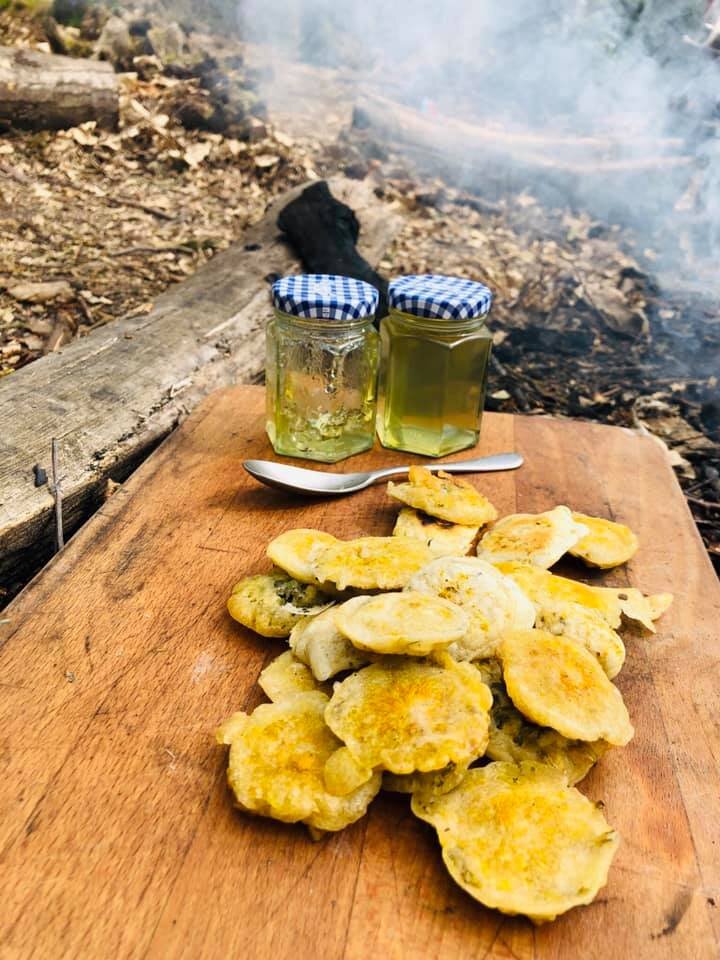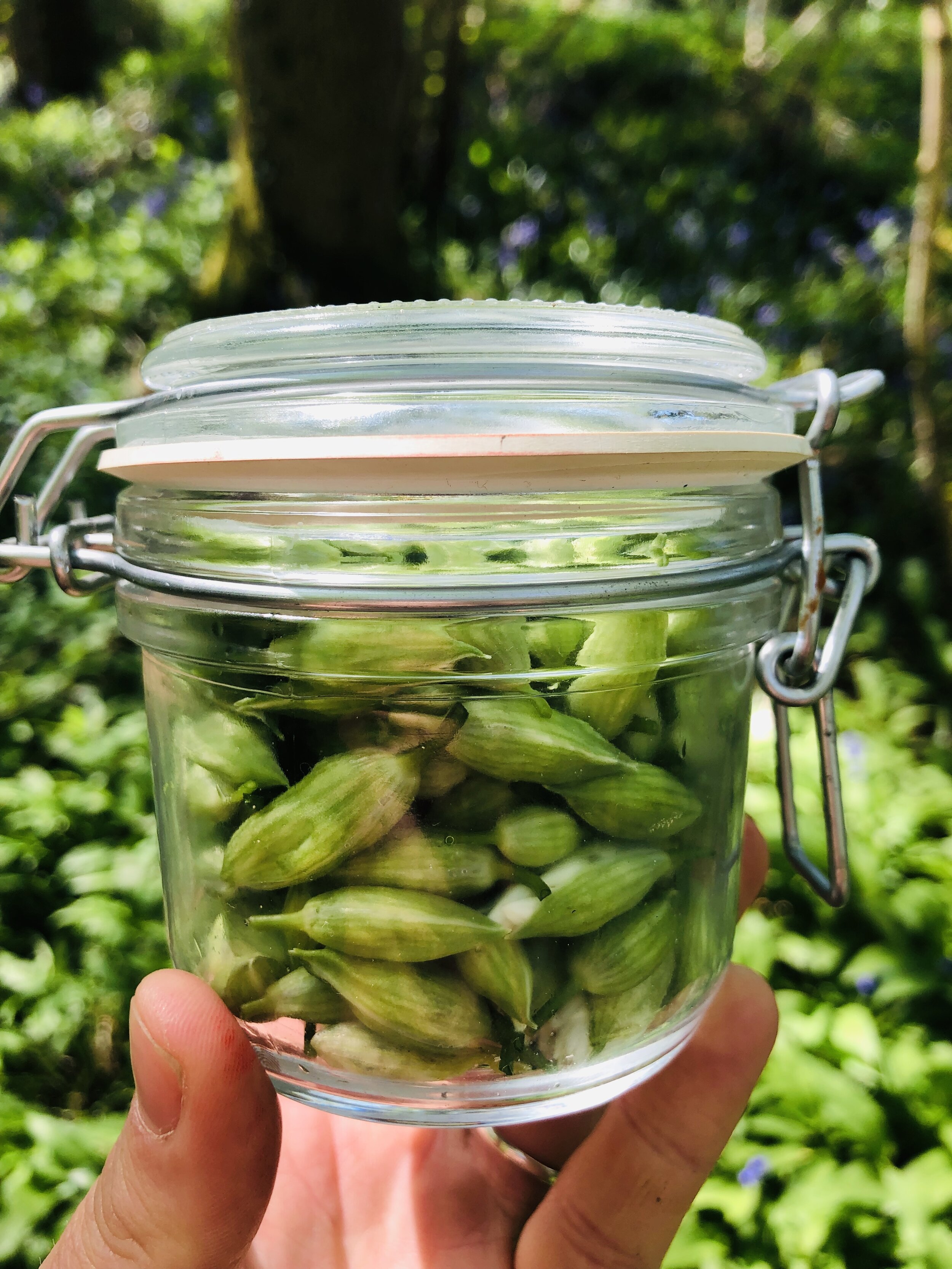Hazel Leaf Crumble Parcels
/By Mel Evans
In previous posts we have shared a lot of recipes and talked about the value of foraging and preparing food with children. We generally stick to ingredients that are easy to identify and hard to mistake when working with families. By doing this we hope to empower people to try achievable recipes. Children thrive in being involved in making food from the very beginning, cooking together and sharing food is a great way to bond people and the sensory element of exploring new flavours and textures is invaluable. There is also a feeling of resilience that comes from knowing you can source your own food.
Some of the fail safe recipes we have previously shared include Hawthorn Flower Water, Pickled Wild Garlic Buds, Elderflower Sugar, Nettle Pakoras and Dandelion Jam.
Today’s recipe uses foraged Hazel Leaves. Lots of tree leaves are edible and are at their best at this time of year, They have grown to a reasonable size, but are still young and tender. Foraging tree leaves is a great way to brush up on your tree I.D too.
If you have been watching your local trees through the seasons you might have noticed the Hazel’s yellow catkins in the Spring and its nuts in the Autumn. However, at this time of year, the leaves are the thing to look out for. They are soft to touch as they are covered in downy hairs and have a serrated or toothed edge.
Hazel is often copiced and you are more likely to see a number of stems coming out the ground rather than one trunk. Hazel may also become part of a hedgerow. We love the Woodland Trusts resources on trees and they offer a very comprehensive guide to Hazel here.
Once you have sourced your leaves you can go about making your crumble parcels. You need to make a crumble by rubbing flour and butter (or a non dairy alternative) together until it resembles breadcrumbs. Then some sugar can be mixed in. The parcels don’t take a lot of crumble so a tablespoon or two of flour and a small knob of butter will be just fine. Every family seems to have their own way of making crumble though! Oats, nuts and sweet spices such as cinnamon and nutmeg can be added in whatever combination appeals.
Making crumble is a fun sensory activity in itself!
The crumble mix is layered onto the Hazel leafs along with stewed fruit. The obvious seasonal fruit choice now is rhubarb. You may even have some growing and if not its easy to pick up locally. You can use any fruit you feel like though and we have even used a jar of ready made apple sauce in the past.
A teaspoon of fruit is put on the Hazel leaf and topped with crumble.
The leaf is then wrapped around the filling and secured with a cocktail stick or small skewer. These are then fried on both sides in a little butter. I’m always relieved that the soft hairs on the leaf cook away at this point, but they don’t always bother the children who will readily much on them raw. They only take a few minutes to cook and when the leaves have browned slightly they can be removed from the pan. They should be allowed to cool a little and the cocktail stick removed before eating.















